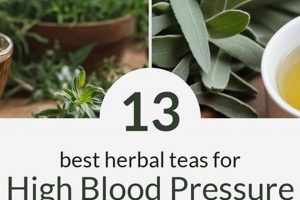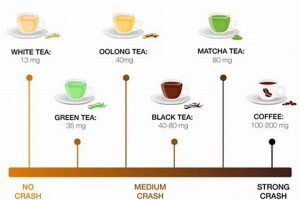Specialized tools and devices are essential for the effective processing of botanicals. These implements facilitate various stages, from initial plant preparation to the final extraction and formulation of herbal products. Examples include mills for grinding dried herbs, percolators for liquid extraction, and encapsulation machines for creating standardized dosages.
The use of appropriate implements ensures product quality, consistency, and safety. They allow for the precise control of variables such as temperature, pressure, and particle size, which significantly impacts the final product’s potency and therapeutic value. Throughout history, the evolution of these instruments has paralleled advancements in botanical science and manufacturing techniques, ultimately contributing to more reliable and effective herbal remedies.
The subsequent sections will delve into specific categories of tools and devices, examining their functionality, operation, and application within the realm of botanical processing and product development. These categories encompass extraction apparatus, size reduction machinery, mixing and blending implements, and quality control devices, each playing a critical role in producing high-quality botanical products.
Optimizing Botanical Processing
Effective use of specialized instruments is crucial for maximizing yield and maintaining the integrity of botanical preparations. The following considerations will aid in achieving consistent and high-quality results.
Tip 1: Material Selection: Prioritize components constructed from inert materials such as stainless steel or laboratory-grade glass. This prevents contamination and ensures compatibility with a wide range of botanical constituents and solvents.
Tip 2: Calibration and Maintenance: Regularly calibrate and maintain all instrumentation, including scales, thermometers, and pressure gauges. Precise measurements are essential for reproducible results and adherence to standardized protocols.
Tip 3: Precise Size Reduction: Employ appropriate milling or grinding techniques based on the botanical material. Avoid excessive heat generation during size reduction, which can degrade heat-sensitive compounds.
Tip 4: Controlled Extraction Parameters: Optimize extraction parameters such as solvent ratio, temperature, and extraction time based on the target compounds. Over-extraction can lead to the inclusion of undesirable constituents, while under-extraction reduces yield.
Tip 5: Efficient Filtration: Implement effective filtration methods to remove particulate matter and clarify extracts. Choose filter media compatible with the solvent and botanical constituents to avoid unwanted interactions.
Tip 6: Temperature Monitoring: Implement effective temperature monitoring for the whole extraction process so it doesn’t damage the ingredients.
Tip 7: Standardized Procedures: Establish and adhere to standardized operating procedures (SOPs) for all processes. This ensures consistency, reduces errors, and facilitates documentation for quality control purposes.
Mastering these considerations can greatly enhance the efficacy and safety of botanical processing operations. Proper planning and precise execution are key to achieving desired outcomes.
In conclusion, investing in appropriate devices and adhering to rigorous protocols are essential for unlocking the full potential of botanical resources. The subsequent discussions will further explore advanced techniques and best practices in botanical processing.
1. Extraction Efficiency
Extraction efficiency, in the context of botanical processing, refers to the percentage of target compounds successfully removed from plant material using a specific solvent and apparatus. The design and functionality of the equipment directly influence this efficiency. Inadequate instruments may result in incomplete extraction, leaving valuable compounds behind and decreasing the overall potency of the final product. Conversely, suitable apparatus coupled with optimized extraction parameters maximizes the recovery of desired constituents.
The connection between extraction efficiency and the implements employed is causal. For example, a poorly designed Soxhlet extractor may suffer from channeling, where the solvent bypasses portions of the plant material, resulting in incomplete extraction. Conversely, a well-designed supercritical fluid extractor, capable of precisely controlling temperature and pressure, can achieve near-complete extraction of lipophilic compounds. Similarly, ultrasonic extraction devices enhance mass transfer, accelerating the extraction process and improving yields compared to traditional maceration techniques. Proper maintenance and calibration of extraction devices are also crucial; a malfunctioning temperature controller on a rotary evaporator, for instance, can lead to the degradation of heat-sensitive compounds and a reduction in the overall extraction efficiency.
Understanding the relationship between extraction efficiency and equipment is of significant practical importance for both small-scale herbalists and large-scale manufacturers. Optimizing extraction methods through the selection of appropriate apparatus reduces waste, lowers production costs, and ultimately improves the quality and therapeutic value of botanical preparations. Challenges in this area involve balancing the cost of advanced apparatus with the potential gains in efficiency, as well as adapting existing techniques to new botanical sources and target compounds. Further research into novel extraction methodologies and the development of more efficient tools continue to be areas of active investigation.
2. Material Compatibility
Material compatibility is a paramount consideration in the design and selection of implements used in botanical processing. The chemical interactions between the apparatus components and the plant material, solvents, or resulting extracts can significantly impact product purity, safety, and efficacy. Choosing suitable materials prevents contamination, degradation, and undesirable reactions that can compromise the quality of herbal products.
- Inertness of Construction Materials
The construction materials of implements must be chemically inert to avoid leaching of substances into the botanical preparations. Stainless steel (specifically grades 304 and 316) and laboratory-grade glass are commonly favored due to their resistance to corrosion and reactivity. For example, using plastic containers not rated for solvent exposure can result in plasticizers leaching into the extract, rendering it unsafe for consumption or use. Similarly, brass or copper parts can introduce heavy metal contaminants.
- Solvent Resistance
Various solvents are employed during extraction, each with unique properties and potential reactivity. It is crucial that the implements used, such as tubing, seals, and containers, are resistant to the specific solvents involved. For instance, using standard rubber tubing with aggressive solvents like acetone can cause it to degrade, releasing impurities and potentially compromising the process. Teflon (PTFE) and other fluoropolymers offer broad solvent resistance and are often preferred in such scenarios.
- pH Stability
The pH of botanical extracts can vary significantly, ranging from highly acidic to alkaline. Apparatus components must be stable across this pH range to prevent corrosion or degradation. For example, aluminum is unsuitable for use with acidic extracts, as it can react to form aluminum salts. Glass and certain grades of stainless steel exhibit good pH stability, making them suitable for a wide range of botanical preparations.
- Temperature Tolerance
Botanical processing often involves heating or cooling samples to facilitate extraction, concentration, or preservation. The implements employed must be able to withstand the temperature extremes without deformation or degradation. For example, using plastic containers in autoclaves can cause them to melt or warp, compromising sterility and potentially releasing harmful chemicals. Borosilicate glass and high-temperature polymers are typically used in applications involving extreme temperatures.
Neglecting material compatibility can have severe consequences, including product contamination, loss of potency, and potential health hazards. Thorough evaluation of material properties and meticulous selection of suitable implements are thus essential for ensuring the safety and quality of herbal products. Adherence to Good Manufacturing Practices (GMP) and careful documentation of material specifications are crucial aspects of maintaining product integrity in the botanical processing industry.
3. Precision Measurement
The efficacy and safety of botanical products are inextricably linked to accurate quantification at every stage of production. “Precision measurement” as a component of “herbal equipment” dictates the consistency, potency, and overall quality of the final formulation. Inadequate measurement capabilities within implements lead to variations in extraction yields, ingredient ratios, and ultimately, unpredictable therapeutic effects. The absence of “precision measurement” introduces a cascade of potential errors that undermine the integrity of the entire process. The cause is inaccurate tools; the effect is inconsistent or potentially harmful herbal products.
A practical example lies in the extraction process, where solvent-to-herb ratios must be carefully controlled. A digital scale with a high degree of accuracy is essential for determining these ratios. Deviation from the optimal range results in either incomplete extraction, leaving valuable compounds unrecovered, or over-extraction, pulling in unwanted substances that degrade product purity. In encapsulation, precise volumetric dispensers are required to ensure uniform dosing of herbal powders. Inaccurate dispensers result in capsules with variable potencies, rendering them unreliable for therapeutic use. Another instance is in quality control, where spectrophotometers and chromatography systems demand precise calibration and measurement capabilities to accurately assess the concentration of key active constituents. If these instruments lack precision, the resulting data is unreliable, leading to misidentification of product strength and potential non-compliance with regulatory standards.
The reliance on “precision measurement” within “herbal equipment” is therefore not merely a matter of optimizing efficiency; it is a fundamental requirement for producing safe, consistent, and therapeutically effective botanical products. Addressing challenges in this area involves investing in calibrated, high-resolution instruments, adhering to standardized operating procedures, and implementing rigorous quality control measures. The implications extend beyond individual products, impacting consumer trust and the credibility of the entire herbal industry.
4. Process Control
Process control, in the context of botanical processing, refers to the ability to maintain consistent and predictable conditions throughout the manufacturing lifecycle. The functionality of implements determines the degree of process control achievable. Poorly designed or maintained implements introduce variability, compromising product quality and consistency. Suitable implements, coupled with well-defined protocols, allow for precise regulation of critical parameters, ensuring reproducible outcomes.
Consider the maceration of botanical material in a solvent. Without temperature control, the extraction rate fluctuates with ambient conditions, yielding inconsistent concentrations of active constituents. Implementing a temperature-controlled water bath allows for maintaining a stable extraction temperature, promoting consistent and efficient extraction. Similarly, in distillation processes, precise control over heating rates and vacuum levels is vital for selectively separating volatile compounds. An improperly calibrated heating mantle or a leaky vacuum system leads to inconsistent fractionation, affecting the purity and composition of the distillate. Furthermore, the automation of processes, such as liquid handling and mixing, reduces human error and enhances process control. Automated dispensing systems provide accurate and reproducible volumes, while automated mixers ensure uniform homogenization, minimizing batch-to-batch variations.
The effectiveness of process control within manufacturing is pivotal for adhering to quality standards and fulfilling regulatory requirements. It enables the production of botanical products that are consistent, reliable, and safe for consumers. Challenges in this area encompass the cost of implementing advanced apparatus, the need for skilled personnel to operate and maintain implements, and the development of robust analytical methods to monitor process parameters. The integration of advanced sensors, data analytics, and feedback control systems offers opportunities for further enhancing process control and optimizing botanical manufacturing operations. This leads to the betterment of herbal products.
5. Scalability
Scalability, in the context of manufacturing, defines the capacity to increase production volume efficiently and effectively while maintaining consistent product quality. A direct relationship exists between appropriate equipment and the potential for scaling up botanical processing operations. Implements designed primarily for small-scale use often present limitations when production demand increases. These constraints include reduced throughput, increased labor costs, and potential quality inconsistencies stemming from manual interventions. Conversely, implements designed with scalability in mind facilitate a seamless transition from pilot-scale production to larger commercial volumes.
The implementation of scalable instruments has significant implications for botanical manufacturers. For example, consider a small-scale extraction facility employing a series of manually operated percolators. As demand grows, relying solely on additional manual percolators becomes economically unsustainable due to increased labor and space requirements. In contrast, investing in a large-scale automated extraction system, such as a counter-current extractor, significantly increases throughput while minimizing labor costs. Similarly, a company producing encapsulated herbal supplements may initially use a manual encapsulation machine. Expanding production using additional manual machines is inefficient and prone to dosage inconsistencies. Upgrading to a fully automated encapsulation line dramatically increases output, reduces variability, and ensures compliance with quality control standards. The selection of instruments compatible with higher production volumes is therefore not merely an operational consideration but a strategic imperative for sustained growth.
Scalability as a factor impacts several facets of a manufacturers operations including capital investment, facility planning, and workforce training. Evaluating throughput capacity, automation capabilities, and compatibility with existing systems is crucial. The challenges in this regard encompass balancing upfront capital expenditure with long-term cost savings, adapting production processes to accommodate new technologies, and maintaining product quality throughout the scale-up process. Understanding the implications of scalability as a function of available tools is essential for manufacturers aspiring to expand operations, meet market demand, and remain competitive in the herbal industry.
Frequently Asked Questions
This section addresses common inquiries regarding the selection, utilization, and maintenance of implements employed in botanical processing.
Question 1: What are the primary considerations when selecting botanical implements?
Material compatibility, intended throughput, process control capabilities, and scalability are paramount. Implements must be constructed from inert materials, capable of handling the desired volume, and offer precise control over critical parameters. Future production needs must be considered.
Question 2: How does the implements impact extraction efficiency?
The design and functionality directly influence extraction efficiency. Appropriately engineered implements, such as Soxhlet extractors or supercritical fluid extractors, maximize the recovery of target compounds. Maintenance and calibration of extraction implements are also crucial to consistent extraction.
Question 3: What are the recommended practices for cleaning and maintaining botanical processing implements?
Adherence to a rigorous cleaning schedule is essential. Implements should be thoroughly cleaned after each use, employing appropriate cleaning agents compatible with the construction materials. Regular inspection for wear and tear, along with timely replacement of damaged components, is critical.
Question 4: How do regulatory standards influence the selection of implements?
Good Manufacturing Practices (GMP) mandate that implements be designed, constructed, and maintained to minimize the risk of contamination and ensure product quality. Compliance with GMP guidelines is a legal requirement in many jurisdictions.
Question 5: What role does automation play in manufacturing?
Automation streamlines operations, reduces labor costs, and enhances process control. Automated systems, such as liquid handlers and encapsulation machines, provide consistent results and minimize the risk of human error.
Question 6: How can small-scale processors effectively manage equipment costs?
Prioritization of essential instruments is important. Investing in multipurpose implements, such as a high-quality laboratory-grade hot plate with magnetic stirrer, helps. Leasing instruments or seeking shared facility arrangements can also reduce capital outlay.
The correct choice and maintenance of appropriate facilitates efficient and high-quality botanical processing.
The article will transition to a discussion of emerging technologies in the field of herbal extract production.
Conclusion
The preceding exploration has underscored the critical role specialized implements play in shaping the efficacy and consistency of botanical products. From extraction efficiency to scalability, the quality and functionality of “herbal equipment” directly impact every stage of the manufacturing process. Investment in appropriate instruments, coupled with adherence to rigorous operational protocols, is not merely a best practice, but a fundamental requirement for producing safe, reliable, and therapeutically valuable herbal remedies.
Continued advancements in materials science, automation, and process control offer opportunities to further refine and optimize botanical processing techniques. A commitment to staying abreast of these developments, and to continually evaluating and improving manufacturing processes, will be essential for ensuring the long-term viability and integrity of the herbal industry. The pursuit of excellence in manufacturing demands a dedication to precision, quality, and an unwavering focus on the therapeutic potential of botanical resources.



![Buy Herbal Tea at Walmart: [Your Best Options] The Ultimate Herbal Remedies Guide: Natural Healing for a Healthier Life Buy Herbal Tea at Walmart: [Your Best Options] | The Ultimate Herbal Remedies Guide: Natural Healing for a Healthier Life](https://umangherbals.com/wp-content/uploads/2025/11/th-411-300x200.jpg)



